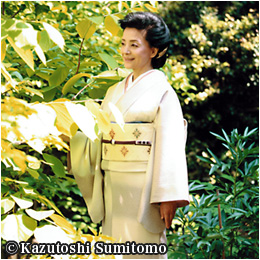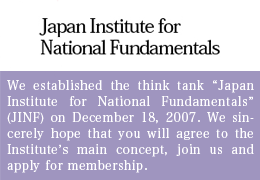LACKING CLEAR STRATEGY TOWARDS CHINA, OBAMA SUFFERS SETBACK
Leaders of Asia-Pacific nations, including the US and Russia, congregated in Beijing November 11-12 for the 17th APEC (Asia-Pacific Economic Cooperation) conference then traveled to Myanmar and Australia to attend two other summit meetings—the ninth East Asian Summit in Nay Pyi Taw, Myanmar (November 13), and the G-20 summit in Brisbane, Australia (November 15-16). Of all the leaders present, Obama clearly looked precariously spiritless.
While in Beijing, Obama held close consultations with Xi Jinping for a total of ten hours, including a private walk with his host. On the surface, the occasion reminded one of Xi’s visit with Obama last June at a Californian retreat. However, their summit this time will be long remembered as emblematic of a decline in Obama’s clout as an international leader. The contrast between the two leaders was that conspicuous. Permeating their talks was China’s steadfast determination to earn big nation status on a par with the US, and the craftiness of its strategy in pursuing its goal. By contract, the US undeniably lacked a grand strategy to cope with China effectively.
At a news conference following the Obama-Xi summit, the Chinese leader spoke first, mentioning at the outset that China and the US had “agreed to continue to advance the development of a new model of major-country relations.” He concluded once more with similar words: “…with unwavering spirit and unremitting efforts, we will continue to build a new model of major-country relations between our two countries.”
Xi’s reference clearly pointed to a new world order Beijing covets—one that revolves around China and the US under which, broadly speaking, the two nations will split the Pacific Ocean between them, each securing its territory and respecting the counterpart’s core interests while cooperating with each other as necessary. Should the US accept this understanding, it will be tantamount to recognizing Taiwan, Tibet, the South China Sea, and the Senkaku Islands as China’s core interests.
Opening and closing his remarks with frequent references to the “major-country relations,” Xi vigorously trumpeted the agreement reached in Beijing as an example of the closeness of the current China-US relationship.
Detailing each of the more than ten subjects covered during his talks with Obama at the APEC summit—including finance, the economy, military affairs, anti-terrorism measures, the environment, and US visas for Chinese citizens—Xi boldly outlined his vision of a “division of the Pacific Ocean” between the two countries, stating that “the Pacific Ocean is broad enough to accommodate the development of both China and the US…”
ASEAN Assumes “Wait and See” Posture
Xi also challenged the US to participate in the Asia Infrastructure Investment Bank (AIIB), founded barely a month before the summit, describing the new bank—about which Washington has strong reservations—as “open and inclusive.”
China also gave its consent to a plan by the BRICS (Brazil, Russia, India, China, South Africa) emerging market nations to establish a new development bank, as well as the creation of a US$40 billion fund to finance its “New Silk Road” project of intercontinental land routes and maritime links. China has thus laid bare its ambition to replace the key international financial institutions backed by Japanese and American funds, ready to scatter money across the Asia-Pacific region by utilizing its abundant foreign capital, said to be worth some US$4 trillion.
Obama spoke on the heels of Xi’s confident remarks. Rarely has one heard remarks by a head of state so deplorably lacking in strategic vision. Tediously repeating that the US looks forward to China’s success, that it has no intention of containing China, and that the US economy owes part of its growth to China’s economic development, Obama also expressed his hope to take the bilateral relationship to “a new level.”
Obama reportedly made similar remarks during a private dinner the previous day.
It was a careless statement which could in effect be construed as the US favoring the “new model of major-country relationship” Beijing is dead set on developing with Washington. Such remarks could have led the international community to believe the US is weakening its stance towards China, conspicuously influencing the discussions that followed the APEC conference. Consequently, the collective posture of the Asia-Pacific nations towards China reflected in the EAS communique had significantly less impact than the Chairman’s Statement delivered last May 11 at the end of the 24th ASEAN Summit in Myanmar.
At that summit, ASEAN member nations shared a deep sense of impending crisis over the start of drilling operations by a mammoth oil rig that China had brought to an area in the South China Sea claimed by Vietnam. The summit’s chairman issued a 58-point agreement that reflected “serious concerns over the on-going developments in the South China Sea.”
The statement stressed the need to “strengthen democracy,” “enhance good governance and rule of law,” “protect human rights and fundamental freedoms,” “adhere to a code of behavior in the South China Sea,” and “(honor) the principles of peaceful settlement of disputes…in line with the purposes and principles of the United Nations Convention on the Law of the Sea.” It was clear that the conference organizers had China very much in mind, although refraining from naming it. By contrast, ASEAN’s communique six months later was virtually silent about the Chinese threat.
Meanwhile, remarks by ASEAN leaders were low-key. Philippine President Benigno Aquino who, backed by strong support from the US, has previously often made strong remarks about China—for instance, he compared China to Nazi Germany last February 4—obviously decided to change his tone. He was quoted as remarking:
“The Philippines will not be unreasonable (about our territorial rights in the South China Sea)…we are eager to search for a constructive solution…we do not intend to allow the South China Sea issue to disrupt the larger relationship we have with China.”
Obviously, not only Aquino but the other ASEAN leaders as well—sensing the diffidence on the part of Washington—have decided to assume a wait-and-see attitude, abandoning any confrontational posture towards China. The latest East Asian Summit has made it quite plain that when the US as the superpower wavers, the ASEAN members cannot help but give in to China.
Going Back to Ancient Times
Although blatant criticism directed at Beijing has diminished among ASEAN countries due largely to America’s about-face and the lingering fear of China, China’s actions in the South and the East China Seas are becoming ever more aggressive. For example, China has completed a military runway on Woody Island in the disputed Paracel Islands, which China wrested from Vietnam some 40 years ago. This island now constitutes the core of Sansha City, which China constructed over time and then arbitrarily declared to be part of Hainan Province in 2012, giving it a people’s government overlooking the South China Sea.
The reclamation of Fiery Cross Reef in the Spratly Islands, also claimed by Vietnam, began around June this year, and has now reached 0.9 square kilometers in size. It is the biggest among all of China’s reclamation projects in the Spratly Islands. Some 200 men of the People’s Liberation Army (PLA) Marine Corps are believed to be stationed there.
On October 17, China announced that construction of man-made islands is in progress on six of the seven reefs in the Paracel Islands which it now rules. If China turns these reefs into islets equipped with radar facilities, it will enable the PLA to control the entire South China Sea. Securing air supremacy will lead to command of the sea.
China’s territorial expansion appears to have no bounds. The ultimate in China’s outlandish territorial claims is the ancient historical grounds it cites for its sovereignty over the South China Sea. Last June, PLO’s Deputy Chief of Staff Lt. Gen. Wang Guan Zhong was quoted as saying: “China’s sovereign power and jurisdictional rights over the South China Sea have been taking shape since the Han Dynasty, some 2,000 years ago”—a ridiculous claim indeed. Obama is simply not able to cope with a China with such a mindset.
US foreign policy, reflecting Obama’s deplorable lack of mettle as head of a superpower, is the biggest factor now contributing to China’s rise as a ruthless big power. Prime Minister Shinzo Abe must never succumb spiritually like Obama to China—a deviant nation out to overstep the bounds of international law and order.
(Translated from “Renaissance Japan” column no. 632 in the November 27, 2014 issue of The Weekly Shincho)








